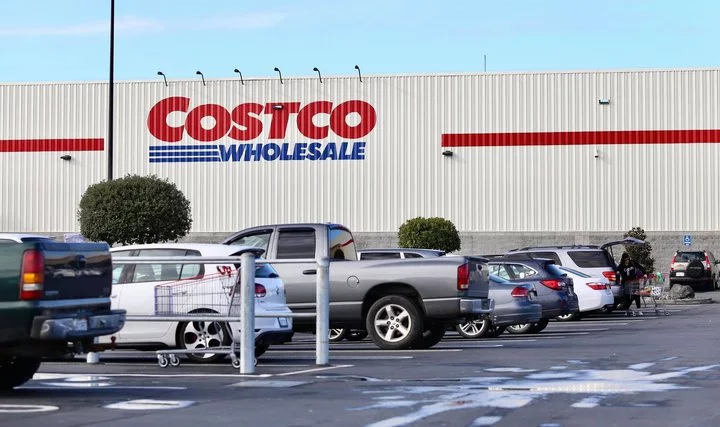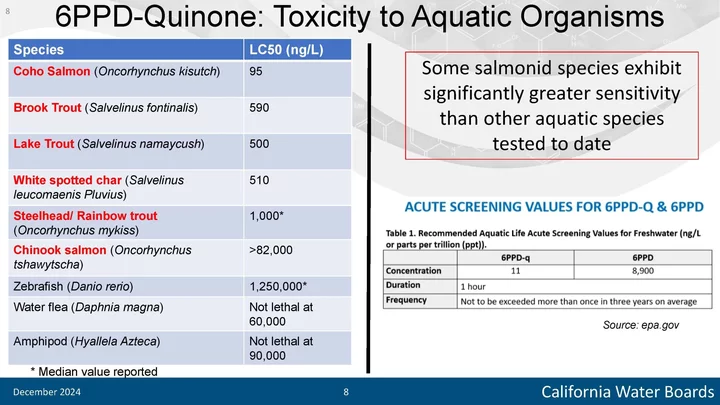File photo: Andrew Goff.
###
PREVIOUSLY:
###
A few years ago, scientists started identifying a potentially major culprit in the dramatic decline of the coho salmon fishery — a chemical known as “6PPD-quinone,” a byproduct of a chemical used in automotive tires.
Throughout the course of their life, tires deposit the precursor of this chemical everywhere they travel. This precursor degrades into 6PPD-q and enters the water system, killing coho in particular — a protected species under the Endangered Species Act — with great efficiency.
Now, a new study from Humboldt Waterkeeper, conducted in Eureka and Arcata throughout the last few months, shows that you don’t need a huge, dense car population to generate potentially lethal concentrations of 6PPD-q — regular old parking lots seem to do it just fine.
Jennifer Kalt, executive director of Humboldt Waterkeeper, told the Outpost that her organization received a grant last year to test how much of the chemical can be found in parking lot runoff water, which — in most places — drains directly into an estuary or the bay.
Kalt and her colleagues collected runoff water from two Cal Poly Humboldt parking lots in late October 2024, and then from the parking lots of Costco and Target in Eureka in April of this year.
“We basically wanted to start at the source see how bad it is coming out of the parking lot,” Kalt said.
The samples were sent off to Weck Laboratories for analysis, and the results showed high levels of the chemical — 130 nanograms per liter in the two Cal Poly Humboldt parking lots, and 340 ng/L and 430ng/L in the Costco and Target parking lots, respectively. (See the lab reports here and here.)
The “median lethal dose” of the chemical, for juvenile coho, is believed to be around 95 ng/L.
To Kalt, the test results — taken at a particular point in time — show that the chemical is definitely entering into the ecosystem after accumulating in Humboldt County parking lots. There’s still a lot to be determined, such as how much of the chemical accumulates in estuaries where the fish live. She said Waterkeeper is awaiting test results from Eureka’s Martin Slough and Janes Creek, in Arcata.
The study comes at a time when the California Assembly is considering legislation — Assembly Bill 1313 — that would require owners of large parking lots to acquire stormwater discharge permits and mitigate their runoff. The bill is supported by a large number of environmental organizations, including Humboldt Waterkeeper, and opposed by the California Chamber of Commerce. (See a rundown of the bill over at Digital Democracy.)
Fortunately, Kalt said, it appears that a great amount of the 6PPD-q that accumulates in parking lots can be kept out of the ecosystem with simple, low-tech measures like bioswales — natural, vegetated features that filter lots of different classes of pollutants before stormwater is released into the environment. Such features are already a standard part of any new parking lot built in the county.
Kalt said she’s hopeful that awareness of the problem and the relative simplicity of the solution — combined with a prod from the legislature — can go a long way toward building back coho stocks.
“I don’t know if it’s going to be the silver bullet that brings coho back, but it does seem to be a key part of the puzzle as to why they’re suffering so much,” Kalt said.
Apparently no one knows yet why 6PPD-q is so much more lethal to coho than other salmonid species, but such seems to be the case. Slide from a Dec. 2024 California Water Board presentation, via Maven’s Notebook.


CLICK TO MANAGE